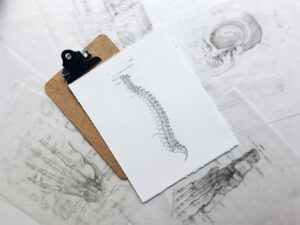Osteoporosis: Risks, Causes, and Chiropractic Care
Chiropractor
January 4, 2016
To find out if Specific Chiropractic is right for you, CLICK HERE and schedule your complimentary consultation.

Osteoporosis threatens 28 million Americans, with women making up 80% of those affected. By age 50, one in two women and one in eight men will suffer an osteoporosis-related fracture. As baby boomers age, the impact of this bone-weakening disease will only grow. Chiropractic care can help those with osteoporosis
.
Osteoporosis accounts for 90% of fractures in people over 65, causing 1.5 million fractures each year. This includes 300,000 hip fractures and hundreds of thousands of other breaks. One-third of women and one-sixth of men will experience a hip fracture by old age. Disturbingly, these fractures prove fatal 12-20% of the time.
Bones, living tissues rich in calcium, are vital for blood production and nutrient storage. They undergo constant remodeling—old bone is replaced with new bone. This remodeling is crucial for skeletal strength and is controlled by the nervous system. Bones also store calcium and other minerals. When these minerals dip in the bloodstream, the body compensates by pulling from bone stores, leading to bone loss if not replenished.
Researchers identify a critical point in bone density decline, beyond which bones easily fracture. Falling below this fracture threshold indicates osteoporosis.
Poor posture can affect physiological functions and contribute to chronic conditions, impacting bone health. Correct posture is essential for maintaining homeostasis and overall health.
Often termed the “silent disease,” osteoporosis may weaken bones for years without symptoms. Chiropractic care can help by serving as an excellent preventative measure. Routine spinal exams are crucial for neurological and skeletal health. Chiropractic adjustments help maintain proper spinal structure, restore normal function, and prevent structural degeneration.
Osteoporosis doesn’t have to be a silent threat. With chiropractic care, individuals can manage their bone health effectively. Don’t wait for symptoms to appear; proactive spinal care and lifestyle adjustments can make a significant difference. Consider chiropractic evaluations to enhance your bone health and overall well-being.
To find out if Specific Chiropractic is right for you, CLICK HERE and schedule your complimentary consultation.
A Wyomissing chiropractor serving Reading and the greater Berks County area
By texting Keystone Specific Chiropractic Center at 610-741-6700, you agree to receive Conversations (external) messages from Keystone Specific Chiropractic Center. Reply STOP to opt-out; Reply HELP for support; Message & data rates may apply; Messaging frequency may vary. Visit our Privacy Policy to learn more.
© 2024 | All Rights Reserved | Keystone Specific Chiropractic Center
Website by Power Marketing International